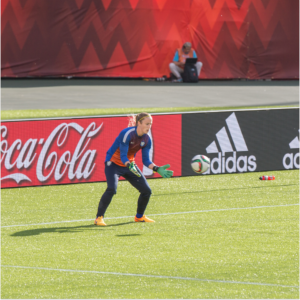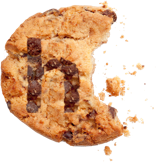17 year-old Elias Malmqvist on how clubs and companies go hand-in-hand when it comes to business, and how youngsters can get involved

Coca-Cola was one of FIFA's first global sponsors, and its advertising in football stadiums has a long history dating back to 1950.
August 8, 2024
Capitalism and football – How Gen Z could influence high value deals
Billions of pounds have been made through football sponsorships since the 1950s. Large brands such as Coca-Cola, Emirates Airways, McDonald’s, Volkswagen, and Carlsberg have been synonymous with the beautiful game as their iconic logos have been spotted at numerous matches.
Whether it be on a shirt, on the stadium, or in a TV advert, football clubs and businesses go hand-in-hand when it comes to making money.
Here’s how capitalism has impacted football and society as a whole.
Humble beginnings in Germany
Advertising has been around since the ancient Greek and Roman times, with members of the higher-classes sponsoring sporting events to demonstrate a city’s prestige and their own social standing.
Due to the sport’s captivating and engaging nature, combined with ingenuity and understanding from sponsoring brands, several different forms of sponsorship have developed throughout sporting history. Sponsorship in football has progressively increased throughout the years since it first began with a German club paving the way for the future.
Eintracht Braunschweig holds the title of pioneering shirt sponsorships by partnering up with a local alcohol brand, Jägermeister, back in 1955. The team sported the company’s logo on their shirts, and this innovative advertising campaign created a new wave of financial possibilities across the globe as it opened the door for numerous capitalist opportunities.
The start of a new era
Fast forward nearly 40 years to the 1990s, and advertising on football shirts was an element of the game fans were used to.
In England, clubs such as Arsenal (JVC), Manchester United (Sharp) and Liverpool (Candy) were just some of the high profile teams that were putting company logos on their iconic shirts.
Read more:
The 1992-93 season kicked off the beginning of the Premier League era with 22 teams competing in the newly reformed division. The inaugural season of the league saw teams put on kits with sponsors that ranged from chemical companies to sportswear manufacturers.
Shirt sponsors in the 1990s were heavily dominated by companies selling electronic goods, as products such as TVs, radios, and cassette players, became increasingly accessible throughout the decade.
Sponsorship in football served as an opportunity for these electronic goods companies to gain popularity and an increase in sales from the exposure gained through its logo being visible in numerous matches.
The league’s eventual champions, Manchester United (Sharp), and runners-up Aston Villa (Mita Copiers) both sported sponsors from electrical goods manufacturers, whilst the likes of Liverpool, Blackburn Rovers, Nottingham Forest and Tottenham Hotspur were all sponsored by beer brewers, such as Carlsberg, McEwan’s Lager, Shipstones, and Holsten respectively.
This became a trend which continued throughout the league’s first decade.
Alcoholic drinks sponsorship peaked relatively early in its history, and by the 2017–18 season, no clubs were advertising the substance. In total, there have been 62 seasons of alcohol sponsorship.
The season with the largest number of alcohol sponsorship deals was between 1994–95 with six: McEwan’s at Blackburn, Coors at Chelsea, Carlsberg at Liverpool, Newcastle Brown at Newcastle United, Labatt’s at Nottingham Forest, and Holsten at Tottenham.
Alcohol sponsorship went out of fashion in recent years, with Everton being the league’s only example between 2010–2017.
What changed at the turn of the millennium?
The 2000s have marked a new start of high value deals with football clubs and large corporations. For example, Arsenal, who had been associated with brands in the electrical industry (JVC), gaming industry (Dreamcast/SEGA) and the network industry (o2), completely changed their approached in 2004.
That year, which was the same season when they were crowned Premier League champions without losing a league game, signed a lucrative contract with the travel company, Fly Emirates.
Read more:
The airline were already tied in with a contractat the Gunners’ London rivals in Chelsea, but as their deal with the Blues would expire in 2005, there was no conflict of interest. Then, in 2006, the year that saw Arsenal move groundsfrom Highbury to the Emirates Stadium, the business’ iconic logo was branded on the jerseys.
This deal was extended in 2018 and the move has seen both parties gain hundreds of millions of pounds in profit. Arsenal receives £50mn annually from Emirates following a 25% increase from the previous £40mn payout.
The company has become synonymous with the club, gaining enormous exposure to a global audience of over 3bn people,encouraging the public to fly with Emirates Airlines.
However, there are also instances where sponsorships go downhill. For example, at the start of the 2007–08 season, West Ham United signed a deal with holiday and travel company XL Airways. However, one year later the company went bust leaving the Hammers in a sticky situation as they had numerous jerseys up for sale promoting a company that no longer existed.
XL collapsed with debts of £143mn, leaving the East London side in the hunt for a replacement partner after losing out on the remainder of a deal worth between £3m and £4m a year.
The club suspended all sales of its replica shirts and players were forced to play matches in an unbranded strip, with the players’ squad numbers being issued on the front to cover up the redundant logo. In a statement on the club’s website back in 2008, they said: ‘West Ham United have taken the decision to immediately terminate their relationship with XL Holidays.’
How football sponsorships have shaped society
Over the years, football sponsorships have increased immensely as have the benefits. AIA’s partnership with Spurs has seen benefits for both parties, as the pair signed a new shirt sponsorship deal in 2019 worth a reported £40mn annually, which is a landmark deal for the club. The insurance group has also seen a rise in revenue from $20.4bn (2013) to $45.2bn (2022) within the first ten years of the partnership.
And it doesn’t end there. First joining forces in 2010, international banking group Standard Chartered became Liverpool’s fifth, and current, main shirt sponsor, taking over from Danish beer manufacturer Carlsberg, which lasted from 1992–2010. Initially agreeing a four year partnership worth a reported £80mn, the union has seen a great amount of success for both parties.
Standard Chartered have utilised the partnership to support a number of sustainability and community investment programmes, including ‘a global initiative to tackle inequality and promote greater economic inclusion’ known as futuremakers.
However, sponsorships in football over the last 15 years have not all been this successful and positive. Betting and gambling companies started gaining online popularity in the early 2000s and seeked to gain more visibility and profit through sponsoring football clubs. These business were first seen sponsoring football clubs during the 2002-03 Premier League season, when Fulham partnered up with Betfair.
Learn more:
In the 2006/7 season, for the first time, the number of teams being sponsored by gambling companies overtook the number of those associated with alcohol companies. The tide was turning into new territory, and it hasn’t been good news for the public.
Whilst clubs and betting companies have made hundreds of millions of pounds, numerous fans have lost thousands through excessive gambling advertising. It is likely that these deals have contributed to the rise of gambling addictions in the UK.
During the most recent Premier League season (2023-24), there were eight clubs with gambling companies as shirt-front sponsors, with an estimated value of £60mn per annum. However, due to new regulations there will be zero gambling companies allowed on the front of shirts by 2026/27, due to the rapid increase of betting usage in the country by both fans and even players.
Ivan Toney, a forward for Brentford FC, repeatedly placed bets on matches his own team were involved in, including 13 occasions when he backed his club to lose, and gave ‘clearly false’ answers to the investigation into his breaches of gambling rules.
Toney, who represented England at the most recent European Championships, was banned for eight months after admitting 232 breaches of the Football Association’s rule E8, which prohibits players from gambling on football. His sanction would have been three months longer had Toney not been diagnosed during the investigation with a gambling addiction.
Carolyn Harris, the chair of the Gambling-Related Harms All-Party Parliamentary Group, believes shirt sponsorship by betting companies “normalises” gambling for children, and that gambling sport sponsorships should be banned in all forms.
The future of football sponsorships
We can expect football clubs with long lasting sponsorships to remain put for some time. However, there is hope and speculation that the companies sponsoring teams can change for a better future and encourage growth and stability in this unpredictable world.
For example, with a growing emphasis on environmental awareness and eco-friendly practices, we may see clubs align with sponsors focusing on green initiatives, reflecting the socially responsible spirit of audiences such as Gen Z.
A notable example is the Forest Green Rovers who primarily work with eco-friendly companies. They have been described by FIFA, as ‘the world’s greenest football club’ by introducing many sustainable practices such as installing solar panels, only supplying vegan food, and providing electric car charging points.
Furthermore, as the digital retail landscape evolves, football clubs may create partnerships with direct-to-consumer brands (DTC), providing new methods of engaging with fans ‘while tapping into the potentials of data-driven, personalised marketing campaigns’. Sponsorships with DTC brands is a reasonable adaption with the rapid, ever-changing technological advancements.
Sponsorships in football will likely follow the progression of the world as football is such a global and popular sport. Football has forever been changed since the introduction of sponsorships and it looks like these are here to stay.




